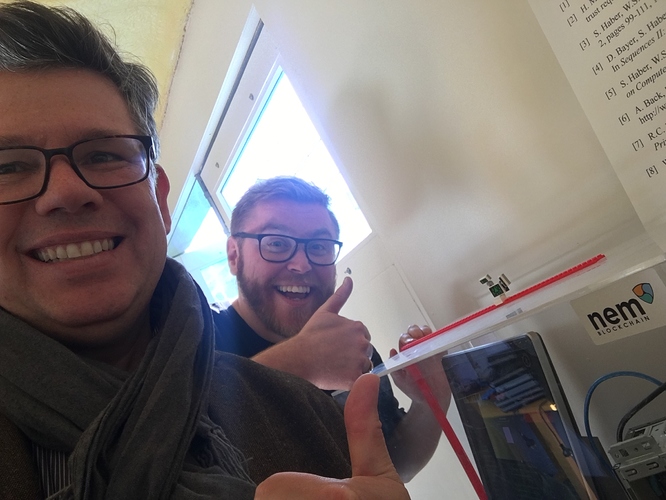@memario, thanks so much for your post, and for considering our proposal!
Firstly, it’s awesome to hear that you think it’s a cool project! We do too, and we’ve been quietly working on it for quite a while now, and have had a lot of feedback at various stages. Everyone we’ve spoken to has recognised and been excited by the RocketShoes vision, the core value proposition and our team’s capability to execute.
Your post also allows me to address a couple of key points head on, which we have also covered during this journey. The budget has been developed with due consideration and is based on experience with projects of similar scope; and in an initial pass we considered whether we could achieve a viable business model with a smaller budget.
When we started with the concept we considered using other approaches, with IPFS and Ethereum in mind. While working in February at the Blockchain Centre Melbourne (which is awesome by the way) we were approached by the NEM team and a few things became immediately apparent.
Firstly, the development community focus, and attention to a platform architecture that can be quickly applied to real world applications means that we can in principle move more quickly than we might by developing from scratch in Solidity & IPFS. The whole smart asset framework immediately appealed to me actually, and we could see areas of application in education straight away. Added to this was the strong desire for the NEM Foundation to support projects in new areas of application, and here we were working on an idea in education – a global vertical with immense social impact.
Secondly, and even more impressively, we were immediately told about the ProximaX project, and as soon as I read the White Paper I realised it provides exactly the kind of combination of tech that we need to leverage to achieve the RocketShoes goals.
Explaining this further will also address your next point, which is to do with the value to the NEM Community of supporting RocketShoes to be developed as a NEM-powered platform. The existence and future development of ProximaX (particularly evident when it supports Catapult) will allow us to focus firmly on the end user application and APIs that bring value in an education context. This is where the project lives. The reason it is so important (and also why it will drive adoption) is that people involved in learning (including students, teachers, administrators, leaders) includes just about everyone, everywhere, and they have lives that involve learning in many contexts, from school, to university, to work, up-skilling and re-skilling. It’s actually huge.
The reason Blockchain is so important is that there is a huge number of points along that journey that involve some kind of transaction. Every assignment submission is a transaction, but so too every grade, every qualification, micro-credential, internal audit point, standard achieved, policy check, regulator audit, and so on.
Added to this, we know from learning theory that a huge amount of learning takes place peer-to-peer (think mentor/mentee relationships) and is not just teacher-student or student-content, as is commonly assumed. When a student shares their notes/digital assets with another student, the temptation is to think “that’s cheating” and try to stop it, but good learning designs actually exploit this idea and get students to teach other students – something that works well online in an environment with rich digital assets. As you can imagine, when there are a lot of people are using a common distributed system like RocketShoes you have a lot of potential for peer to peer sharing and even markets for certain assets. To give an idea of scale, some universities in Australia have up to 80,000 students and 5,000 faculty/staff. Some corporates like Cisco have a million students. There are some assets in those systems that are worth something – which is when they could be sold, generating another transactional point suited to a Blockchain.
At an organisational level, RocketShoes is a way for content to be managed, which means needing to ascertain authorship, ownership/IP, authenticity, and all kinds of things that are actually a royal pain right now in most places. BlockChain is also extremely helpful for this process – and when someone in an organisation wants to do something of this nature it is going to generate calls to a Blockchain.
I hope you’ll agree that it would be valuable to the NEM Community if this was the NEM Blockchain, and not another one.
Personally I think NEM is the perfect fit for our project, and I am delighted to be involved in the community, and looking forward to its support in getting our vote across the line so that we can go and do all the amazing things we will be able to do with RocketShoes.





